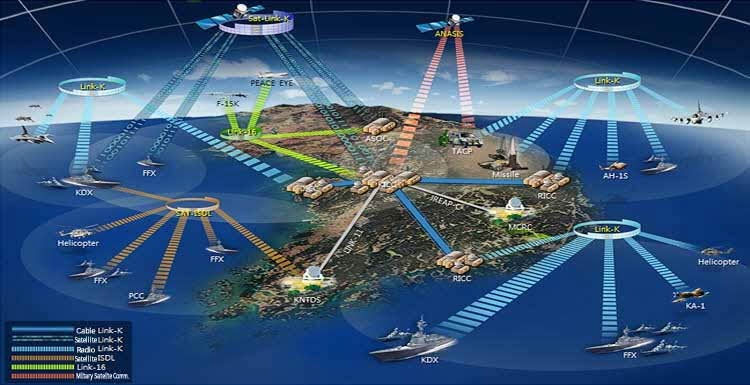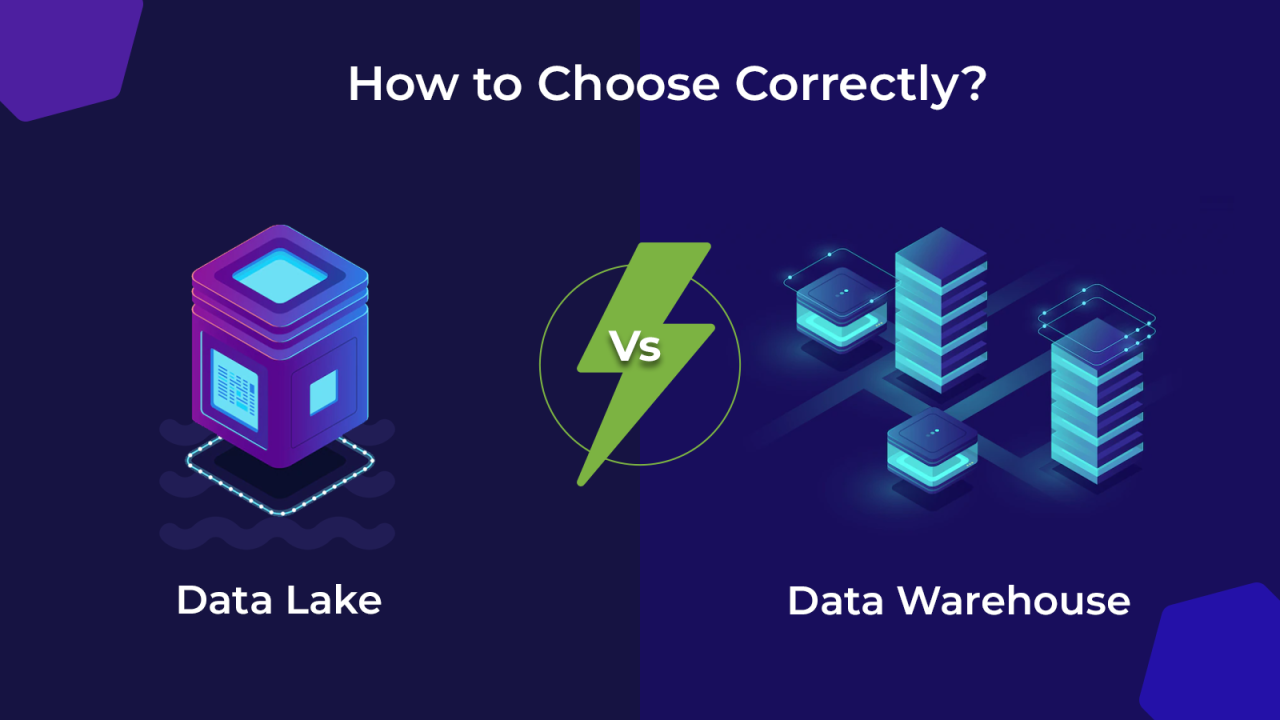In the increasingly complex world of modern IT, organizations are grappling with a fundamental shift in how they deploy and manage their digital infrastructure. The days of solely relying on on-premise data centers or a single public cloud provider are rapidly becoming a relic of the past. A new paradigm, that of multi-environment strategies, is emerging as the dominant approach. This involves strategically utilizing a combination of various cloud platforms (public, private, hybrid) and on-premise infrastructure, often across different vendors, to optimize for performance, cost, compliance, and resilience. Far from being a chaotic mix, this approach, when executed thoughtfully, unlocks unprecedented flexibility and competitive advantage, enabling businesses to navigate a fragmented digital landscape and truly thrive as sophisticated multi-environment strategies emerge.
The Evolution of Infrastructure: Beyond Monolithic Paradigms
To truly grasp the necessity and sophistication of multi-environment strategies, it’s essential to understand the journey of IT infrastructure, from single-site control to today’s diverse and distributed landscape.
A. The Era of On-Premise Monoliths
For decades, the standard approach to IT infrastructure was the on-premise data center. Organizations owned and operated all their hardware, from servers and storage to networking equipment.
- Full Control, High Overhead: This model offered complete control over hardware and data, which was crucial for early security and compliance needs. However, it came with immense capital expenditure (CapEx) for hardware, real estate, power, and cooling.
- Operational Burden: Maintaining these environments involved significant operational overhead: manual provisioning, patching, hardware refreshes, and dedicated IT staff. This often diverted valuable resources from innovation.
- Limited Scalability: Scaling on-premise infrastructure was a slow, capital-intensive process. Acquiring and configuring new hardware could take weeks or months, severely limiting agility and responsiveness to fluctuating business demands.
- Disaster Recovery Challenges: Building robust disaster recovery (DR) capabilities often meant replicating entire data centers, a prohibitively expensive and complex endeavor for many organizations, making true resilience difficult to achieve.
B. The Rise of Single Public Cloud Adoption
The early 21st century witnessed the revolutionary advent of public cloud computing (e.g., AWS, Azure, Google Cloud), offering an agile, scalable, and pay-as-you-go alternative.
- Agility and Speed: Public clouds allowed for rapid provisioning of resources in minutes, accelerating development and deployment cycles, and dramatically reducing time-to-market.
- Elastic Scalability: The ability to instantly scale resources up or down based on demand transformed how businesses managed capacity, moving from CapEx to OpEx (Operational Expenditure).
- Reduced Operational Burden: Cloud providers managed the underlying infrastructure, freeing organizations from tasks like hardware maintenance, patching, and power management, allowing them to focus on applications.
- Vendor Lock-in Concerns: While offering immense benefits, relying on a single public cloud provider introduced concerns about vendor lock-in, including proprietary services, unique APIs, and potential difficulty in migrating workloads if needed. This became a primary driver for seeking alternatives or combinations.
C. The Inevitable Emergence of Multi-Environment Needs
As organizations matured in their cloud adoption, and as business needs grew more complex, it became clear that a single environment, even a public cloud, wasn’t always the optimal solution for everything. This realization paved the way for multi-environment strategies.
- Hybrid Cloud: The desire to extend existing on-premise investments while leveraging public cloud agility led to hybrid cloud models, where private infrastructure seamlessly integrates with public cloud services.
- Multi-Cloud: Concerns about vendor lock-in, regulatory compliance specific to certain regions, or the need to leverage best-of-breed services from different providers drove the adoption of multiple public clouds.
- Workload Optimization: Not all workloads are suitable for every environment. Some require strict data residency, others benefit from extreme elasticity, and some are better off on purpose-built on-premise hardware. Optimizing workload placement became key.
- Resilience and Risk Mitigation: Distributing workloads across multiple environments became a strategy to enhance resilience, preventing single points of failure tied to one vendor or data center.
This evolution highlights a maturation in IT strategy, moving from a single, dominant infrastructure model to a more nuanced, distributed, and strategic approach.
Core Components and Types of Multi-Environment Strategies
Multi-environment strategies are not a one-size-fits-all solution; they manifest in several distinct, yet often overlapping, forms, each designed to address specific business and technical requirements.
A. Hybrid Cloud: Bridging On-Premise and Public Cloud
Hybrid cloud strategies integrate an organization’s on-premise (private cloud) infrastructure with public cloud services, creating a unified IT environment.
- Key Objective: To seamlessly extend existing data center capabilities into the cloud, enabling workloads to move between environments.
- Use Cases:
- Bursting: Handling peak loads by ‘bursting’ excess compute capacity from on-premise to the public cloud.
- Data Residency/Compliance: Keeping sensitive data on-premise while leveraging public cloud for less sensitive applications or processing.
- Legacy Modernization: Gradually migrating monolithic applications to the cloud while maintaining connectivity to on-premise systems.
- Edge Computing Integration: On-premise infrastructure acting as an edge location for processing data closer to the source before sending it to the public cloud.
- Enablers: Technologies like direct network connections (e.g., AWS Direct Connect, Azure ExpressRoute, Google Cloud Interconnect), consistent container orchestration platforms (e.g., Kubernetes, often via hybrid solutions like Azure Arc, Google Anthos, AWS Outposts), and unified management planes.
B. Multi-Cloud: Leveraging Multiple Public Cloud Providers
Multi-cloud strategies involve using services from two or more distinct public cloud providers (e.g., AWS for one application, Azure for another, Google Cloud for data analytics).
- Key Objective: To avoid vendor lock-in, leverage best-of-breed services, enhance resilience, and meet diverse geographical or regulatory needs.
- Use Cases:
- Vendor Lock-in Mitigation: Spreading workloads across providers to reduce dependence on a single vendor’s pricing, features, or policies.
- Best-of-Breed Services: Utilizing a specific cloud provider’s unique services or superior offerings for particular workloads (e.g., Google’s AI/ML capabilities, AWS’s vast service catalog, Azure’s strong enterprise integration).
- Geographical Presence/Compliance: Deploying applications in specific regions offered by different providers to meet data residency requirements or serve users with lower latency.
- Redundancy and Disaster Recovery: Distributing critical applications or data across multiple clouds to achieve higher levels of fault tolerance and disaster recovery beyond what a single region or provider can offer.
- Enablers: Cloud-agnostic technologies like containers (Docker, Kubernetes), Infrastructure as Code (Terraform), and robust networking solutions.
C. Edge Computing: Distributed Processing Closer to Data
While often a component within hybrid or multi-cloud, edge computing is a distinct strategy focusing on processing data closer to its source, often on devices or localized infrastructure at the ‘edge’ of the network.
- Key Objective: To reduce latency, conserve bandwidth, and enable real-time decision-making for IoT devices and other data-intensive applications.
- Use Cases: Manufacturing automation, autonomous vehicles, retail inventory management, smart cities, remote monitoring (e.g., oil rigs, wind farms).
- Integration: Edge deployments typically connect back to a central public cloud for aggregated data analysis, long-term storage, or more intensive AI/ML model training.
D. On-Premise (Private Cloud/Traditional Data Center)
Despite the cloud’s rise, dedicated on-premise infrastructure remains a strategic part of many multi-environment approaches.
- Key Objective: To maintain absolute control over highly sensitive data, meet stringent regulatory requirements, leverage existing investments, or run workloads with very specific performance/security needs.
- Use Cases: Highly regulated industries (e.g., financial services, government, healthcare) for sensitive patient data, workloads requiring extremely low latency to local users/devices, and legacy applications that are difficult to migrate.
These types of environments are not mutually exclusive; a comprehensive multi-environment strategy often involves a nuanced combination of two or more, carefully orchestrated for optimal outcomes.
Driving Forces Behind the Emergence of Multi-Environment Strategies
The increasing adoption of multi-environment strategies is not random; it’s a direct response to a complex interplay of business imperatives, technological advancements, and evolving market dynamics.
A. Optimization for Cost and Performance
One of the primary drivers is the quest for optimal balance between cost and performance.
- Workload Placement Optimization: Different workloads have different cost and performance profiles. Multi-environment strategies allow organizations to place workloads in the environment where they perform best at the lowest cost (e.g., bursting to public cloud for fluctuating loads, keeping stable, heavy workloads on-premise for predictable costs, using specific cloud provider’s specialized services).
- Avoiding Vendor Over-reliance: Spreading workloads across multiple clouds prevents over-reliance on a single vendor, mitigating the risk of unexpected price increases or unfavorable service changes that could impact budget.
- Leveraging Spot/Reserved Instances: Flexibility across environments allows for more strategic use of cloud pricing models (e.g., spot instances for fault-tolerant workloads, reserved instances for stable ones), further optimizing costs.
B. Enhanced Resilience and Business Continuity
Distributing infrastructure across multiple environments significantly boosts resilience and business continuity.
- Disaster Recovery (DR): By replicating data and applications across different public clouds or between on-premise and public cloud, organizations can achieve superior DR capabilities, ensuring operations continue even if one entire environment experiences a major outage.
- Mitigating Single Point of Failure: This approach prevents a single vendor outage or a regional cloud failure from bringing down all critical operations. If one cloud goes down, traffic can be redirected to another.
- Geographical Distribution for Latency: Deploying applications closer to users in different geographical regions (offered by different cloud providers) reduces latency and improves user experience.
C. Regulatory Compliance and Data Sovereignty
For many industries, strict regulatory compliance and data sovereignty requirements are non-negotiable.
- Data Residency: Certain regulations mandate that specific types of data (e.g., personally identifiable information, financial records) must reside within national or regional borders. Multi-environment strategies allow organizations to place data in compliant regions offered by different providers or keep it on-premise.
- Industry-Specific Compliance: Different cloud providers may have specific certifications or offerings tailored to particular industries (e.g., HIPAA for healthcare, FedRAMP for government), enabling organizations to choose the best fit for specific compliance needs.
- Auditing and Governance: Multi-environment approaches often involve robust governance frameworks to ensure consistent compliance across diverse infrastructures.
D. Preventing Vendor Lock-in and Maximizing Flexibility
The desire to maintain agility and avoid being solely dependent on one provider is a strong driver.
- Negotiating Leverage: The ability to move workloads or leverage services from different providers gives organizations greater negotiating leverage with their primary cloud vendor, ensuring competitive pricing and terms.
- Best-of-Breed Services: Organizations can choose the best-in-class service for a specific need from any provider (e.g., Google’s AI/ML, AWS’s IoT, Azure’s enterprise integration), rather than being limited to one vendor’s offerings.
- Future-Proofing: A multi-environment strategy builds flexibility into the IT roadmap, allowing organizations to adapt to future technological shifts, new vendor innovations, or evolving business requirements without a massive re-platforming effort.
E. Leveraging Existing Investments and Legacy Modernization
For established enterprises, multi-environment strategies offer a pragmatic path forward without abandoning existing IT assets.
- Gradual Cloud Migration: Organizations can adopt cloud services incrementally, migrating applications gradually while maintaining connectivity to legacy systems that remain on-premise.
- Optimizing Legacy Workloads: Workloads that are difficult or cost-prohibitive to move to the cloud (e.g., mainframe systems, highly specialized hardware) can remain on-premise while new, cloud-native applications are developed.
- Extending Data Center Capabilities: Hybrid cloud allows organizations to extend the reach of their on-premise data centers, integrating them with cloud services for greater agility without a full data center rebuild.
Challenges and Complexities in Implementing Multi-Environment Strategies
While the advantages are compelling, adopting multi-environment strategies introduces significant complexities that organizations must carefully manage. Without proper planning and tools, it can lead to chaos rather than control.
A. Increased Operational Complexity
Managing infrastructure across multiple disparate environments (on-premise, different public clouds, edge) inherently leads to increased operational complexity.
- Management Tools: Organizations need unified management planes or dashboards to monitor, manage, and automate operations across diverse environments. This often involves integrating multiple vendor-specific tools or investing in third-party multi-cloud management platforms.
- Skill Sets: IT teams need expertise across various cloud platforms and on-premise technologies, leading to a demand for highly skilled professionals and potential talent shortages.
- Troubleshooting: Diagnosing issues in a distributed multi-environment setup can be significantly more complex than in a single, homogeneous environment, requiring advanced observability tools and expertise.
B. Network Connectivity and Latency
Ensuring seamless and secure network connectivity between different environments is a major challenge.
- Inter-cloud Networking: Connecting different public clouds securely and efficiently requires complex network architectures (e.g., VPNs, direct connect services, transit gateways) and careful routing design.
- Hybrid Connectivity: Bridging on-premise networks with public clouds requires robust and redundant connections, often involving dedicated lines or secure VPN tunnels, managing firewall rules, and IP addressing schemes.
- Latency Management: Ensuring acceptable latency for applications that span multiple environments (e.g., a database on-premise accessed by an application in the cloud) requires careful architectural planning and workload placement.
C. Data Management and Consistency
Managing data across distributed environments introduces significant complexities, particularly around consistency, security, and governance.
- Data Replication and Synchronization: Replicating data efficiently and consistently between different clouds or between on-premise and cloud requires robust data synchronization tools and strategies (e.g., message queues, distributed databases, data lakes).
- Data Governance and Compliance: Ensuring that data remains compliant with residency requirements and privacy regulations (e.g., GDPR, CCPA) as it moves across multiple environments is a critical challenge.
- Cost of Data Egress: Cloud providers often charge significant fees for data egress (data leaving their network). This can quickly become a major cost driver in multi-environment strategies if not carefully managed.
D. Security and Identity Management
Security becomes exponentially more complex when resources are distributed across multiple environments.
- Consistent Security Policies: Applying uniform security policies (e.g., firewall rules, encryption standards, access controls) across disparate environments is challenging due to varying vendor-specific implementations.
- Unified Identity and Access Management (IAM): Managing user identities and access permissions across multiple cloud providers and on-premise systems requires sophisticated federated identity solutions (e.g., Okta, Azure AD, Ping Identity) to ensure consistent and secure access.
- Increased Attack Surface: More environments mean more potential entry points for attackers. Comprehensive monitoring and threat detection across all environments are essential.
- Compliance Audits: Auditing for compliance across multiple environments with different configurations and governance models adds significant complexity.
E. Cost Management and Optimization
While cost optimization is a driver, effectively managing costs in a multi-environment setup can be difficult.
- Complex Billing: Tracking and optimizing costs across multiple cloud providers, each with its own complex billing structure, often requires specialized FinOps tools and expertise.
- Shadow IT: Without proper governance, different departments might independently adopt various cloud services, leading to unmanaged costs and security risks.
- Resource Sprawl: The ease of provisioning in the cloud can lead to unused or underutilized resources accumulating across multiple environments if not actively monitored and de-provisioned.
F. Vendor Lock-in (Even with Multi-Cloud)
While multi-cloud aims to avoid vendor lock-in, it’s not a panacea. Deep reliance on proprietary services within any single cloud can still create strong dependencies, even if other workloads are on different clouds. True cloud portability for complex applications remains a significant architectural challenge.
G. Tooling and Automation Fragmentation
The lack of truly universal, cloud-agnostic tools means organizations often have to integrate multiple vendor-specific tools, or rely on complex abstraction layers, leading to tooling fragmentation and increasing the learning curve for teams.
Best Practices for Mastering Multi-Environment Strategies
Successfully implementing and managing multi-environment strategies requires a disciplined approach, leveraging best practices in architecture, governance, and automation.
A. Define a Clear Strategy and Business Drivers
Before diving into multi-environment deployment, clearly articulate why you need it. What are the specific business drivers (e.g., compliance, cost optimization, resilience, vendor lock-in avoidance)? A clear strategy guides workload placement decisions and prevents chaotic, ad-hoc adoption. Understand which applications benefit most from each environment type.
B. Embrace Cloud-Agnostic Technologies and Standards
To maximize portability and reduce vendor lock-in, prioritize cloud-agnostic technologies and open standards wherever possible.
- Containers and Kubernetes: Standardize on containers (Docker) for application packaging and Kubernetes for orchestration (e.g., using managed services like EKS, AKS, GKE, or hybrid solutions like Anthos, Azure Arc). This provides a consistent deployment target across clouds and on-premise.
- Infrastructure as Code (IaC): Use tools like Terraform for provisioning infrastructure across multiple cloud providers using a single codebase. This ensures consistency and automation regardless of the underlying cloud.
- Open Source Databases/Middleware: Favor open-source databases (e.g., PostgreSQL, MongoDB) or middleware that can run consistently across different cloud environments, reducing dependence on proprietary managed services.
C. Implement a Unified Control Plane and Management Layer
To manage complexity, establish a unified control plane or management layer that provides a single pane of glass for monitoring, operations, and governance across all your environments.
- Multi-Cloud Management Platforms: Consider third-party platforms designed for multi-cloud governance, cost management, security, and operations.
- Centralized Observability: Implement comprehensive logging, monitoring, and tracing (e.g., using tools like Splunk, Datadog, Grafana, OpenTelemetry) that aggregates data from all environments, providing end-to-end visibility.
- Policy-as-Code (PaC): Define security, compliance, and operational policies as code (e.g., Open Policy Agent – OPA) and enforce them consistently across all environments.
D. Design for Data Mobility and Consistency
Carefully plan your data strategy across multiple environments.
- Data Replication: Implement robust data replication and synchronization mechanisms for critical datasets that need to reside in multiple environments.
- Data Gravity Consideration: Understand that data has ‘gravity.’ Large datasets are expensive and complex to move. Design applications to process data where it resides or strategically place applications close to their primary data sources.
- Eventual Consistency: For distributed data, accept eventual consistency where appropriate, designing applications that can gracefully handle temporary data inconsistencies.
- Data Egress Cost Management: Monitor and optimize data egress costs carefully by analyzing data flow patterns and leveraging caching or edge processing.
E. Prioritize Robust Network Design
A well-architected network is foundational for multi-environment success.
- Direct Connect/Interconnects: Utilize dedicated network connections (e.g., AWS Direct Connect, Azure ExpressRoute) for high-bandwidth, low-latency, and secure connectivity between on-premise and public clouds.
- VPNs and Network Appliances: Implement secure VPNs for less critical connections and deploy virtual network appliances (firewalls, routers) consistently across clouds.
- Consistent IP Addressing: Plan a coherent IP addressing scheme that avoids overlaps and simplifies routing across environments.
- Zero Trust Networking: Adopt Zero Trust security principles across all environments, enforcing strict access controls and continuous verification for every network connection.
F. Implement Centralized Identity and Access Management (IAM)
A unified Identity and Access Management (IAM) system is critical for security and operational efficiency.
- Federated Identity: Integrate all environments with a central identity provider (e.g., Active Directory, Okta, Azure AD) to provide single sign-on (SSO) and consistent access control across all clouds and on-premise resources.
- Least Privilege: Apply the principle of least privilege, granting users and services only the minimum necessary permissions across all environments.
- Automated Access Reviews: Regularly audit and automate reviews of access permissions to ensure they remain appropriate.
G. Foster a Collaborative and Skilled Workforce
Multi-environment strategies demand a highly skilled and collaborative IT workforce.
- Cross-Functional Teams: Encourage collaboration between traditional operations, cloud architects, developers, and security teams.
- Upskilling and Training: Invest in continuous training for your teams across different cloud platforms, IaC tools, and multi-cloud management technologies.
- Cloud Center of Excellence (CCOE): Consider establishing a CCOE to centralize cloud expertise, develop best practices, and guide multi-environment adoption across the organization.
H. Build for Automation and Continuous Delivery
Automation is the key to managing the complexity of multiple environments at scale.
- Automated CI/CD Pipelines: Implement automated pipelines for building, testing, and deploying applications consistently across diverse environments.
- Infrastructure as Code (IaC) for All Environments: Manage the entire infrastructure lifecycle (provisioning, updates, decommissioning) using IaC tools.
- Automated Security Gates: Embed security testing and policy enforcement automatically throughout the pipelines.
The Future Trajectory of Multi-Environment Strategies
The evolution of multi-environment strategies is continuous, driven by advancing technologies and the persistent pursuit of optimal, resilient, and cost-effective IT.
A. Pervasive Abstraction Layers and Unified Management
The future will see increasingly sophisticated abstraction layers and unified management platforms that truly hide the underlying infrastructure complexity.
- Cloud-Agnostic Platforms: Further development of platforms that allow applications to run seamlessly across any cloud or on-premise, abstracting away vendor-specific APIs.
- AI-Powered Operations (AIOps): AI and Machine Learning will play a larger role in automating operations, predicting issues, optimizing resource allocation, and even self-healing across multiple environments, reducing human intervention.
- Autonomous IT: The long-term vision includes highly autonomous IT operations where systems intelligently adapt, scale, and self-manage across diverse environments with minimal human oversight.
B. Greater Integration of Edge Computing
Edge computing will become an even more integral and sophisticated component of multi-environment strategies.
- Intelligent Edge Devices: Edge devices will have more processing power and AI capabilities, enabling complex real-time analytics and decision-making locally.
- Edge-to-Cloud Continuum: Seamless integration between edge devices, local edge clusters, and central cloud environments, allowing for optimized data processing and application deployment across this continuum.
- Hybrid Edge Solutions: Cloud providers will continue to extend their public cloud services to on-premise and edge locations, blurring the lines between private, public, and edge infrastructures.
C. Enhanced Security and Zero-Trust Across Boundaries
As environments proliferate, security will become even more critical, with a strong emphasis on continuous verification.
- Distributed Zero-Trust: Implementing Zero Trust security principles consistently across all environments, assuming no inherent trust and enforcing strict verification for every user and device accessing resources, regardless of location.
- Homogeneous Security Policies: Development of tools and frameworks that allow for truly homogeneous security policy enforcement across disparate clouds and on-premise, simplifying compliance and reducing attack surface.
- Supply Chain Security for Multi-Cloud: Robust security for software supply chains that span multiple cloud providers and on-premise systems, ensuring integrity and authenticity of all deployed components.
D. Advanced FinOps and Cost Intelligence
Managing costs across multiple environments will evolve with more sophisticated FinOps practices and cost intelligence.
- AI-Driven Cost Optimization: AI models will analyze usage patterns, market prices, and business goals to automatically recommend and even implement cost optimizations (e.g., dynamically shifting workloads, optimizing reserved instance purchases) across multiple clouds.
- Real-time Cost Visibility: Tools providing granular, real-time cost visibility and forecasting across all environments, allowing for proactive budget management.
- Chargeback/Showback Automation: Automating the allocation of cloud costs back to specific business units or projects, fostering greater accountability and cost awareness.
E. Data Fabrics and Intelligent Data Management
Managing data across distributed environments will be simplified by technologies like data fabrics.
- Data Fabric: An architectural concept that provides a single, unified view of data across disparate sources (on-premise, multiple clouds, edge), ensuring data accessibility, consistency, and governance without physically moving all data.
- Automated Data Migration/Placement: AI-driven systems will intelligently determine the optimal location for data based on access patterns, cost, latency, and compliance, and automate its migration or replication across environments.
- Federated Querying: The ability to query data seamlessly across multiple distributed data stores without needing to consolidate it all into one location.
Conclusion
The emergence of multi-environment strategies is not a passing trend but a definitive response to the complex demands of the modern digital era. By intelligently combining public clouds, private clouds, on-premise infrastructure, and edge computing, organizations are moving beyond the limitations of single-platform reliance to achieve unparalleled levels of performance, cost optimization, resilience, and compliance. This approach offers the flexibility to place workloads where they make the most strategic sense, avoiding vendor lock-in and leveraging best-of-breed services.
While navigating the inherent complexities of operational management, networking, data consistency, and security across diverse environments requires disciplined planning and advanced tooling, the benefits are clear. By embracing cloud-agnostic technologies, unified management planes, robust security frameworks, and a skilled, collaborative workforce, businesses can master these intricate landscapes. The future promises even more sophisticated abstraction, AI-driven operations, and seamless integration of edge computing. Ultimately, multi-environment strategies are not just about managing distributed infrastructure; they are about building a more agile, resilient, and competitive digital foundation for global growth, truly defining the next chapter of enterprise IT.














